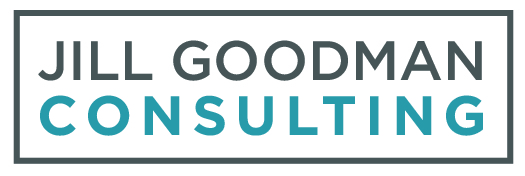The Big Fish
As a development director, how many times have you sat in a board meeting or committee meeting, and the group is lamenting the lack of major donors to your organization?
The conversation with the well-meaning trustee goes something like this:
Trustee: You know, we could really use a big gift for a turf field. My other kid’s school has a turf field, and they attract more students that go on to D1 college programs.
Development Director: That’s an exciting thought. I don’t recall that an upgrade to the field is part of the campus master plan, though. Have you talked with the Head of School or Athletic Director about this idea?
Trustee: No, I thought you could do that for me. I’m short on time these days. But, I saw in the Times that Mary Megawealth is giving away her fortune, and City Hospital is getting the lion's share. You should reach out to her right away to get a meeting before it’s all gone.
Development Director: The school does not have a relationship with Ms. Megawealth. I understand that she is deeply committed to cancer research, but I'd be happy to meet her. Can you introduce me?
Trustee: Oh, I don’t know her. I thought that’s what you do.
Let’s think about what you might do as a result of this interaction.
First, be sure you have a “seat at the decision-making table.” Meaning, are you clear on the school’s short- and long-term objectives and how your development program fits into realizing the school’s vision? Additionally, have you been clear with your board and head regarding the realistic nature of the goals for your donor base and capacity to raise funds within your organization? Development Directors can have many people that they report to and are in service to: Executive Director or Head of School, Board Chair, Development Committee Chair, Alumni Board, Parent Association. The clearer you are about your objectives and your path to success, the better you will be at setting boundaries with competing interests.
Second, consider new ideas, even if they seem unrealistic. Talk to the Head of School and Athletic Director and determine the specific goals and unmet needs of the program. Does the turf field fit into that? Either way, this is an opportunity to create a one-page case for support for the athletic department's needs. In concert with your Head of School, do this for each program area of the school, so you are ready to discuss needs in several key areas in which a prospective donor has an interest. In doing this, you will bring the faculty into the discussion of philanthropy, which is vital to your success. Be sure all cases for support feed the overall mission, vision, philosophy, and strategic plan of the school.
Third, get motivated. The trustee conversation might have made you aware of the shortcomings in your relationships with prospective donors. Use that slightly uncomfortable feeling to motivate you to dig deeper into your data to learn who you have not spoken within the last six months or the previous year? Who are your loyal donors? How much do you know about them? Conduct internal and external research about your prospects, and make discovery appointments to learn their interests and priorities for philanthropy. Suppose the issue of a turf field comes up again, for example. In that case, you will be better prepared to reach out to potential donors who have a genuine interest in the athletic program to gauge the project's feasibility.
Fourth, research the Big Fish. Now do more research on Ms. Megawealth and any other significant philanthropist in your city that you uncover in your research. Think about what they love and why. Then think about how an unmet need at your school might mesh with the interests of each. Be bold and contact the philanthropist if you see a genuine fit in interest and programmatic need. Use the story of Henry Rowan and the former Glassboro State College, now Rowan University, as inspiration. Malcolm Gladwell created a podcast episode for his series “Revisionist History” about the transformative gift that Rowan gave to the college in 1992. Rowan had no relationship with Glassboro State at the time, but his business was just a few miles from the campus. The development director cold-called him to ask for a meeting. Rowan’s third gift to the school was $100 million to create an engineering school and an endowment for tuition assistance.
Does the Big Fish exist, the one that will magically save your institution and ensure its future forever? Yes, but in the real-world life of a small-shop development director, probably not. What exists are schools of smaller fish waiting to be cultivated, waiting for you to notice their small gift, and notice their interest. They are waiting for you to help them give a more significant gift that will contribute to transforming your program and transforming their life.
The author, Jill Goodman, is a consultant working with independent school leaders to advance their school’s mission, enhance their processes, and bolster their skills.



